Related Research Articles
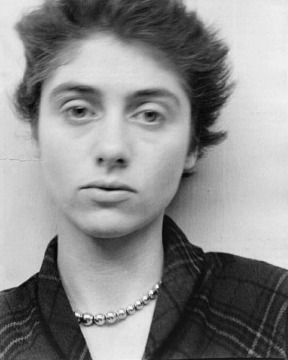
Diane Arbus was an American photographer. She photographed a wide range of subjects including strippers, carnival performers, nudists, people with dwarfism, children, mothers, couples, elderly people, and middle-class families. She photographed her subjects in familiar settings: their homes, on the street, in the workplace, in the park. "She is noted for expanding notions of acceptable subject matter and violates canons of the appropriate distance between photographer and subject. By befriending, not objectifying her subjects, she was able to capture in her work a rare psychological intensity." In his 2003 New York Times Magazine article, "Arbus Reconsidered", Arthur Lubow states, "She was fascinated by people who were visibly creating their own identities—cross-dressers, nudists, sideshow performers, tattooed men, the nouveaux riches, the movie-star fans—and by those who were trapped in a uniform that no longer provided any security or comfort." Michael Kimmelman writes in his review of the exhibition Diane Arbus Revelations, that her work "transformed the art of photography ". Arbus's imagery helped to normalize marginalized groups and highlight the importance of proper representation of all people.

Susan Meiselas is an American documentary photographer. She has been associated with Magnum Photos since 1976 and been a full member since 1980. Currently she is the President of the Magnum Foundation. She is best known for her 1970s photographs of war-torn Nicaragua and American carnival strippers.
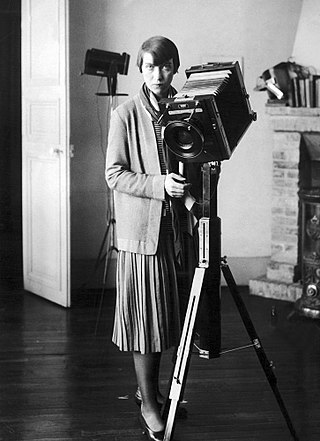
Berenice Alice Abbott was an American photographer best known for her portraits of cultural figures of the interwar period, New York City photographs of architecture and urban design of the 1930s, and science interpretation of the 1940s to the 1960s.

Catherine Sue Opie is an American fine-art photographer and educator. She lives and works in Los Angeles, as a professor of photography at University of California at Los Angeles.

Joel Meyerowitz is an American street, portrait and landscape photographer. He began photographing in color in 1962 and was an early advocate of the use of color during a time when there was significant resistance to the idea of color photography as serious art. In the early 1970s he taught photography at the Cooper Union in New York City.
Tina Barney is an American photographer best known for her large-scale, color portraits of her family and close friends in New York and New England. She is a member of the Lehman family.
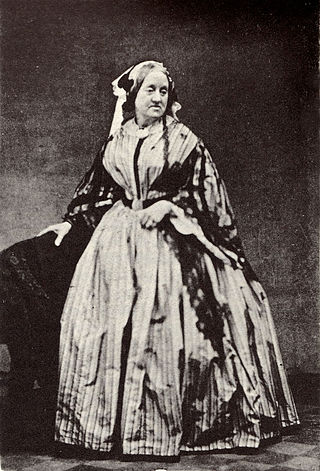
Anna Atkins was an English botanist and photographer. She is often considered the first person to publish a book illustrated with photographic images. Some sources say that she was the first woman to create a photograph.

Graciela Iturbide is a Mexican photographer. Her work has been exhibited internationally, and is included in many major museum collections such as the San Francisco Museum of Modern Art and The J. Paul Getty Museum.
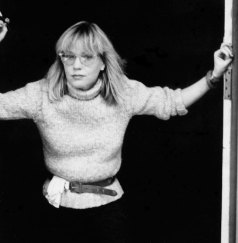
Sarah Edwards Charlesworth was an American conceptual artist and photographer. She is considered part of The Pictures Generation, a loose-knit group of artists working in New York in the late 1970s and early 1980s, all of whom were concerned with how images shape our everyday lives and society as a whole.

Stephen Shore is an American photographer known for his images of scenes and objects of the banal, and for his pioneering use of color in art photography. His books include Uncommon Places (1982) and American Surfaces (1999), photographs that he took on cross-country road trips in the 1970s.

Candida Höfer is a German photographer. She is a former student of Bernd and Hilla Becher. Like other Becher students, Höfer's work is known for technical perfection and a strictly conceptual approach. From 1997 to 2000, she taught as professor at the Hochschule für Gestaltung, Karlsruhe. Höfer is the recipient of the 2018 Outstanding Contribution to Photography award, as part of the Sony World Photography awards. She is based in Cologne.

Judith Joy Ross is an American portrait photographer. Her books include Contemporaries (1995), Portraits (1996), Portraits of the Hazleton Public Schools (2006) and Protest the War (2007), "exploring such themes as the innocence of youth, the faces of political power, and the emotional toll of war".
Lois Conner is an American photographer. She is noted particularly for her platinum print landscapes that she produces with a 7" x 17" format banquet camera.

Alec Soth is an American photographer, based in Minneapolis. Soth makes "large-scale American projects" featuring the midwestern United States. New York Times art critic Hilarie M. Sheets wrote that he has made a "photographic career out of finding chemistry with strangers" and photographs "loners and dreamers". His work tends to focus on the "off-beat, hauntingly banal images of modern America" according to The Guardian art critic Hannah Booth. He is a member of Magnum Photos.

Elinor Carucci is an Israeli-American photographer and educator, living in New York City, noted for her intimate porayals of her family's lives. She has published four monographs; Closer (2002), Diary of a Dancer (2005), Mother (2013) and Midlife (2019). She teaches at the School of Visual Arts in New York.
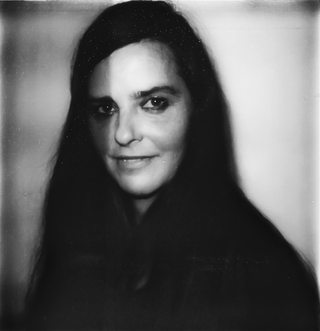
Rineke Dijkstra HonFRPS is a Dutch photographer. She lives and works in Amsterdam. Dijkstra has been awarded an Honorary Fellowship of the Royal Photographic Society, the 1999 Citibank Private Bank Photography Prize and the 2017 Hasselblad Award.
Linda Connor is an American photographer living in San Francisco, California. She is known for her landscape photography.
Carrie Mae Weems is an American artist working in text, fabric, audio, digital images and installation video, and is best known for her photography. She achieved prominence through her early 1990s photographic project The Kitchen Table Series. Her photographs, films and videos focus on serious issues facing African Americans today, including racism, sexism, politics and personal identity.
Jan Groover was an American photographer. She received numerous one-person shows, including at the Museum of Modern Art in New York, which holds some of her work in its permanent collection.
JoAnn Verburg is an American photographer. Verburg is married to poet Jim Moore, who is frequently portrayed as reading the newspaper or napping in her photographs. She lives and works in St. Paul, Minnesota and Spoleto, Italy.
References
- 1 2 3 "Search the Collection". The Metropolitan Museum of Art. Retrieved 2023-04-11.
- 1 2 "Photographers whose work I like - No31/ Susan Lipper". Harvey Benge, 28 June 2016. Accessed 26 March 2018.
- 1 2 3 4 5 6 Gerry Badger (2010). "Far from New York City: The Grapevine Work of Susan Lipper". The Pleasures of Good Photographs. Aperture Foundation. pp. 166–178. ISBN 978-1-59711-139-3.
- 1 2 3 4 O'Hagan, Sean (13 October 2010). "Interview: 'The mystery is enough': Susan Lipper on the Grapevine series". The Guardian . Retrieved 25 March 2018.
- 1 2 https://thephotographersgallery.org.uk/sites/default/files/attachments/Prog_Exhibition_List_1971%20to%202023.pdf
- 1 2 "Susan Lipper". John Simon Guggenheim Memorial Foundation . Retrieved 25 March 2018.
- 1 2 "Photographers in The New York Public Library's Photography Collection". New York Public Library. Accessed 26 March 2018.
- 1 2 "artist:"Susan Lipper"". Minneapolis Institute of Art. Retrieved 2021-08-30.
- 1 2 "Susan Lipper". www.moca.org. Retrieved 2023-04-11.
- 1 2 "Search Results". Victoria and Albert Museum. Retrieved 2021-08-30.
- 1 2 "Susan Lipper (1953-), Photographer". National Portrait Gallery, London. Accessed 25 March 2018.
- ↑ "Susan Lipper". www.susanlipper.com. Retrieved 2023-04-10.
- ↑ Tara, Wray (25 March 2016). "Doin' Work, Flash Interviews With Contemporary Photographers: Susan Lipper". HuffPost . Retrieved 25 March 2018.
- ↑ Susan Harris-Edwards, "Grapevine: Photographs by Susan Lipper". History of Photography, Vol. 19, no. 2 (1995) 180–81. Accessed 26 March 2018.
- ↑ Susan Lipper, "ICP Lecture Series 2010: Susan Lipper Grapevine: Photographs by Susan Lipper". International Center of Photography. Accessed 26 March 2018.
- 1 2 3 Solo, David. "Innocence & the Birth of Jealousy: David Solo on Susan Lipper". The PhotoBook Review (16). Aperture (magazine): 13.
- ↑ Hilton, Tim (6 February 1994). "Exhibitions / If you go down to the woods today: Susan Lipper's sympathetic photographs show a society in decline. Candida Hofer's go even further, taking the people out altogether" . The Independent. Archived from the original on 2022-05-25. Retrieved 25 March 2018.
- ↑ "Festival: Krakow Photomonth". British Journal of Photography. Retrieved 2021-04-19.
- 1 2 Domesticated Land by Susan Lipper.
- ↑ "Susan Lipper". The New Yorker. Retrieved 2023-04-10.
- ↑ "Michael Platt & Susan Lipper". Arnolfini. Retrieved 2024-05-10.
- ↑ "Exhibitions/ Mann's family and other animals: All human life isn't". The Independent. 1994-05-28. Retrieved 2024-05-05.